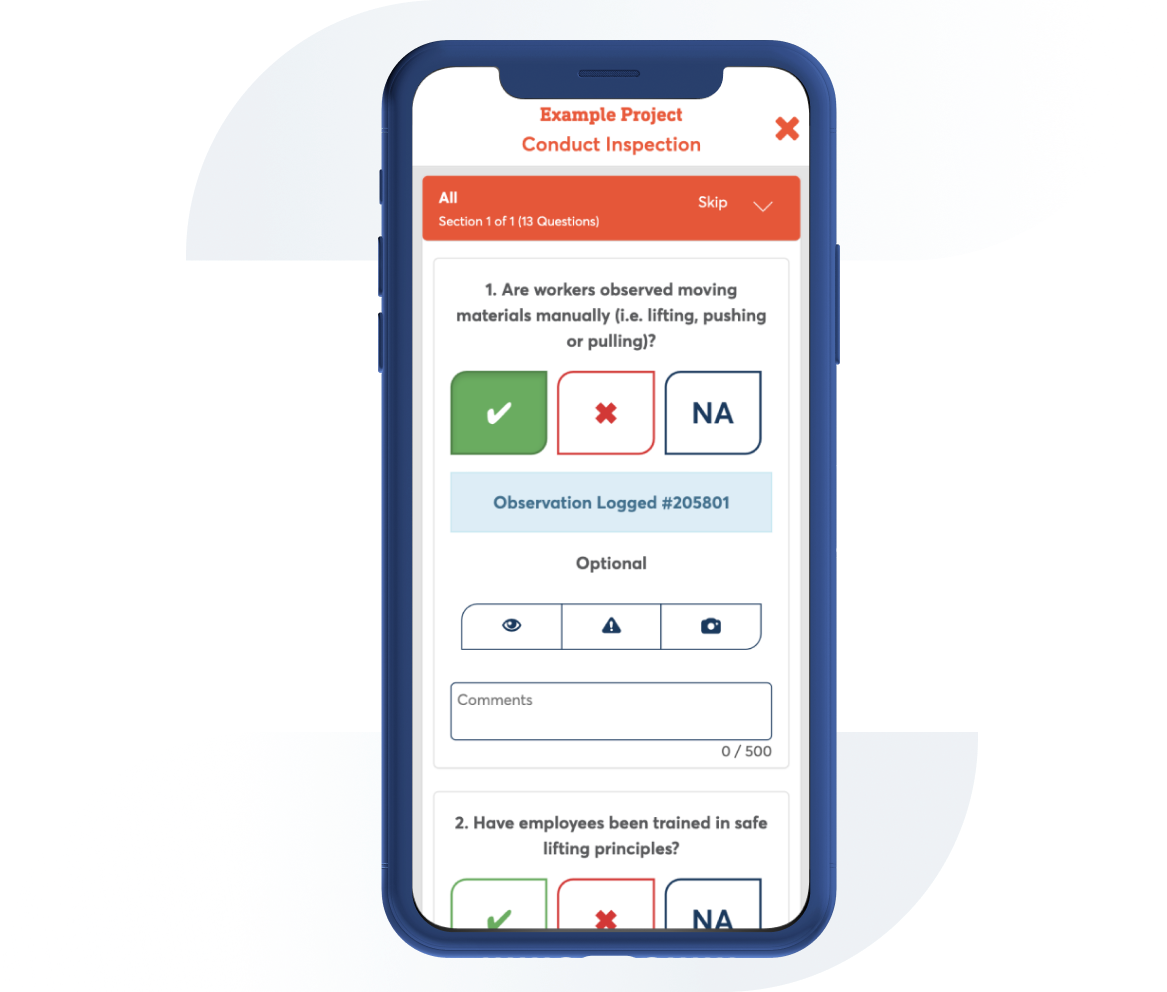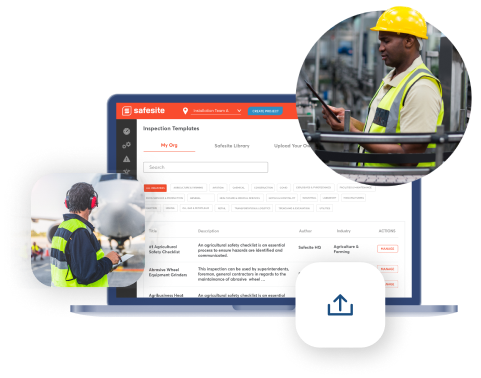Personal Protective Equipment (PPE)
Contributor: Safesite Jurisdiction: OSHA
This PPE checklist can be used by floor managers and safety managers to identify hazards in the manufacturing workplace and select the appropriate equipment to protect workers from injury. PPE should not be the primary means of risk control however this inspection will ensure PPE is used correctly and in an OSHA compliant manner

Template Preview
1. Has a hazard analysis been performed and required PPE designated from that activity?
Actions
2. Is the PPE Hazard Analysis updated and changed when new machinery, processes or other hazards are introduced to the facility?
Actions
3. Does eye protection PPE in use at the facility meet ANSI Z87.1 standard (U.S. Standard for Occupational and Educational Eye and Face Protection)?
Actions
4. Have noise levels been monitored to determine the need for a hearing conservation program?
Actions
5. If required, are audiograms, noise exposure records and associated documentation maintained in accordance with OSHA requirements?
Actions
6. Is approved hearing protective equipment available to every employee working in noisy (where noise levels exceed 90 dBA) areas?
Actions
7. Have processes that may present a respiratory hazard to personnel been identified?
Actions
8. Are the correct type(s) of respirators being worn, where appropriate, by personnel?
Actions
9. If required, do respirator wearers have documentation of their medical qualification to wear the respirators they are using?
Actions
10. If required, do respirator wearers have documentation of training and of the make/model/size of respirator they are using?
Actions
11. Do respirator wearers store their respirators in a clean hygienic manner?
Actions
12. Is all fall protection equipment being inspected by the user prior to use, by a Competent Person yearly and the yearly inspection recorded by the competent person on the equipment tag?
Actions
13. Are personal fall protection harnesses, lanyards, rope pulls, SRLs in good shape with no damage, discoloration or wear?
Actions
14. Are employees required to wear protective footwear when working in areas where there is a danger of foot injuries due to falling or rolling objects, objects piercing the sole, or when there is an electrical hazard, such as a static-discharge or electric-shock?
Actions
15. Write Comments or Remarks here:

Can't find what you are looking for?
